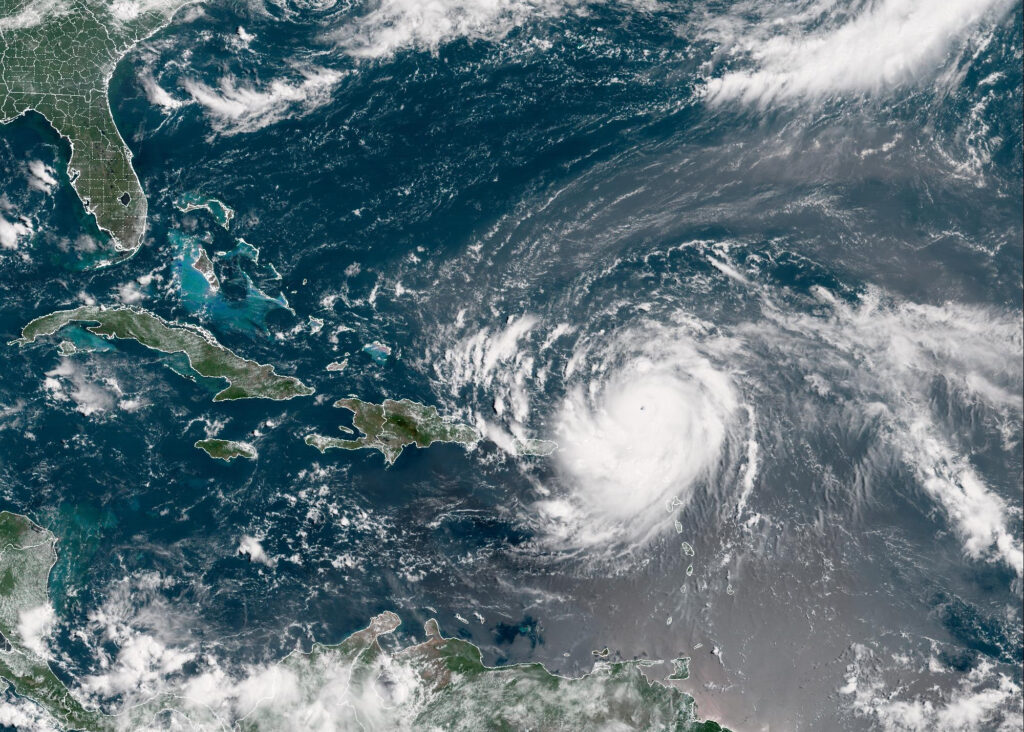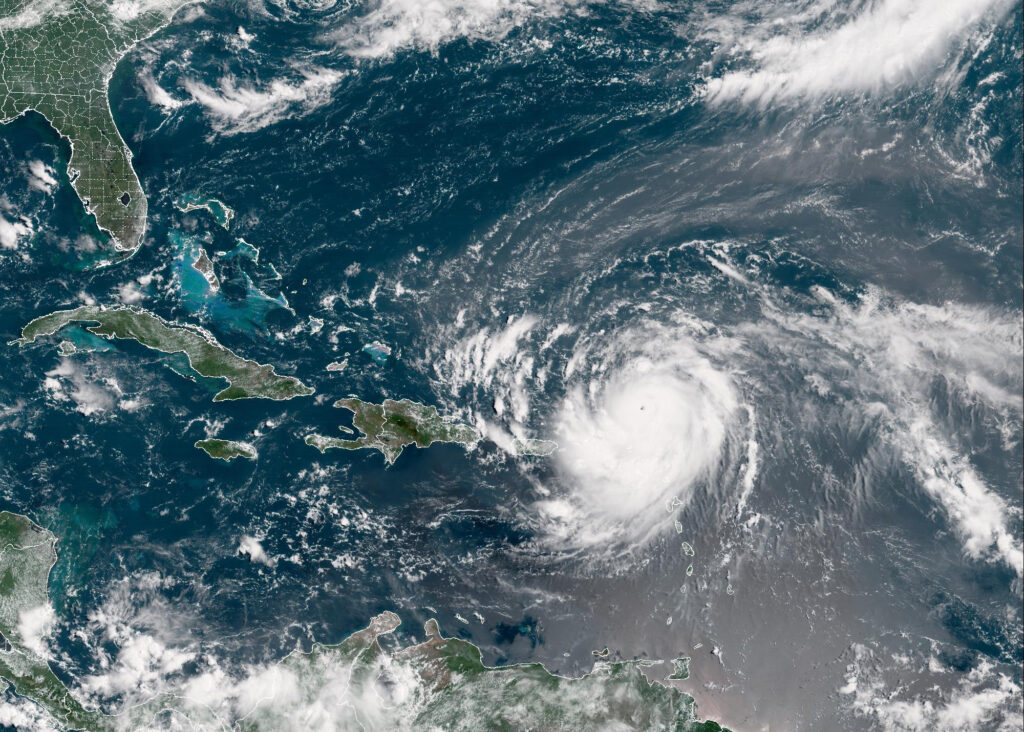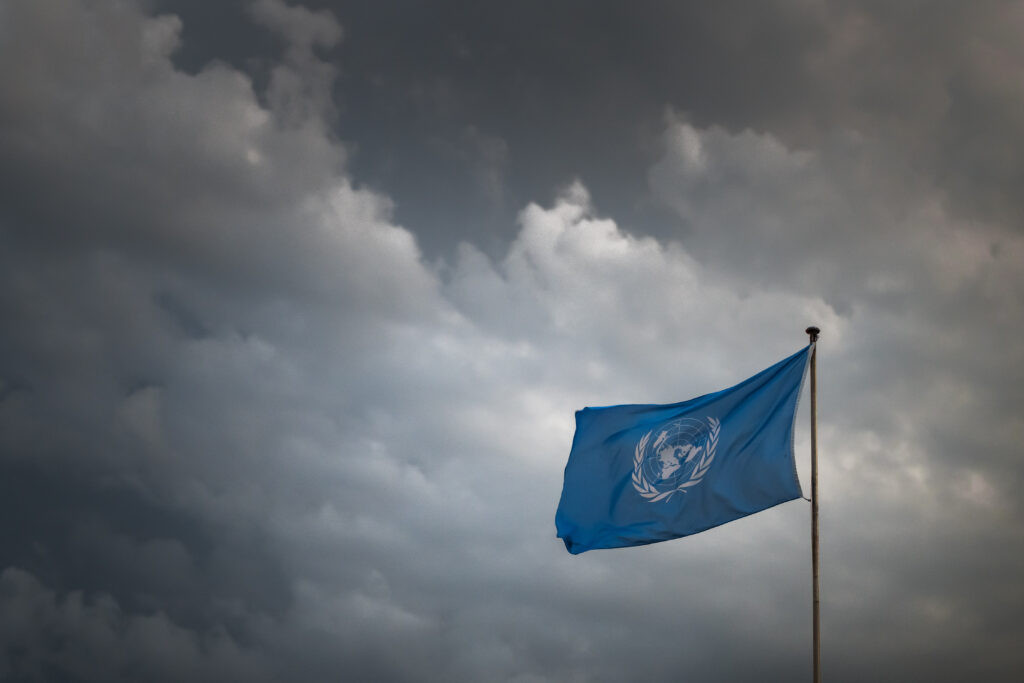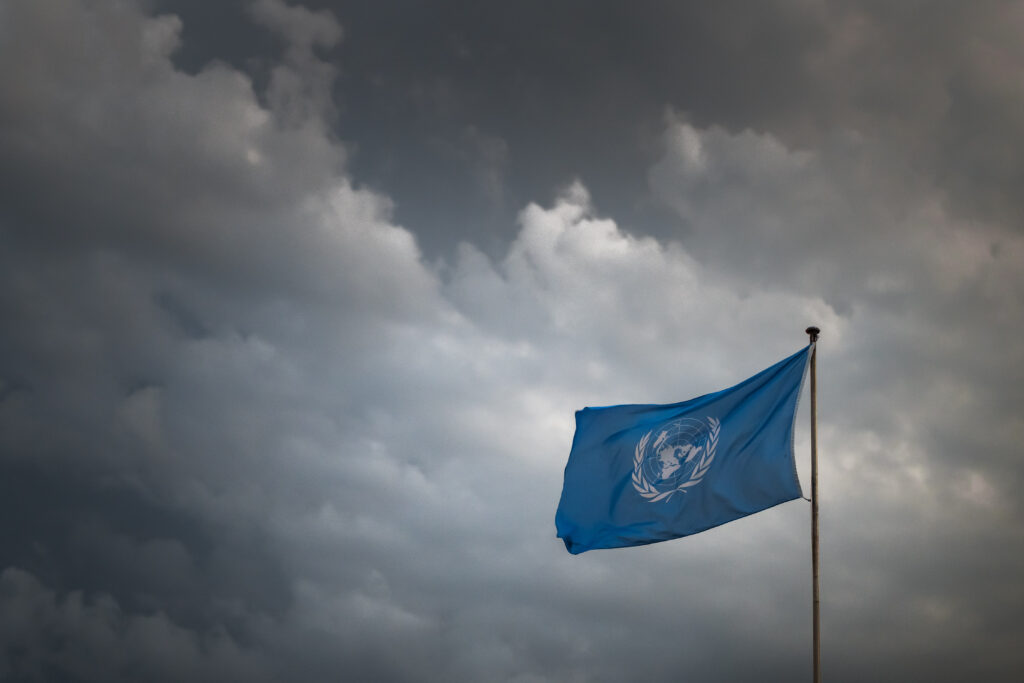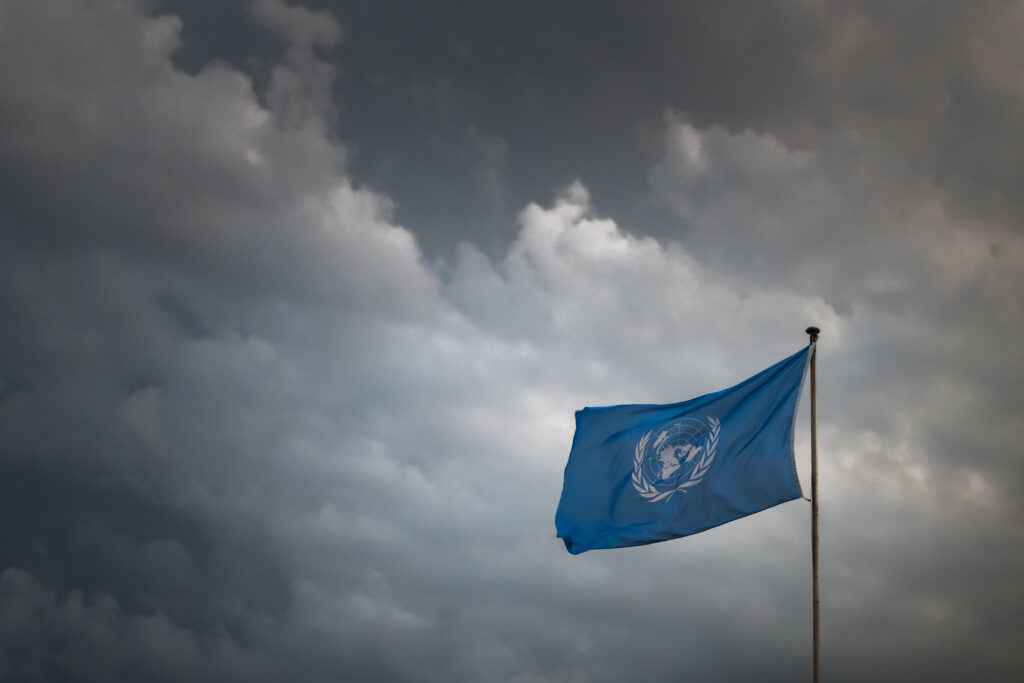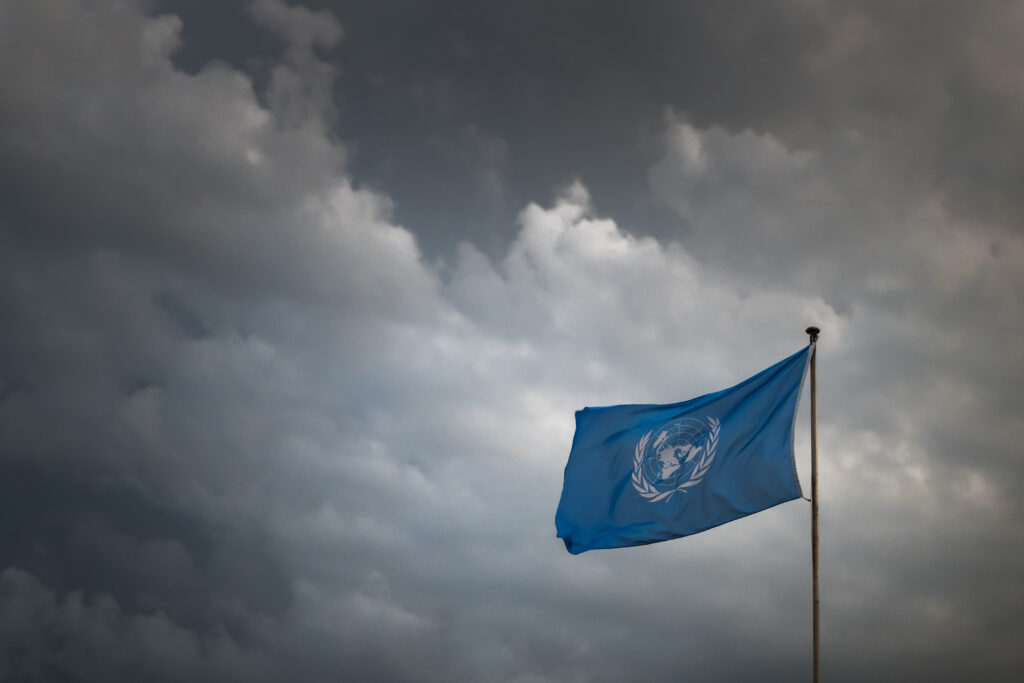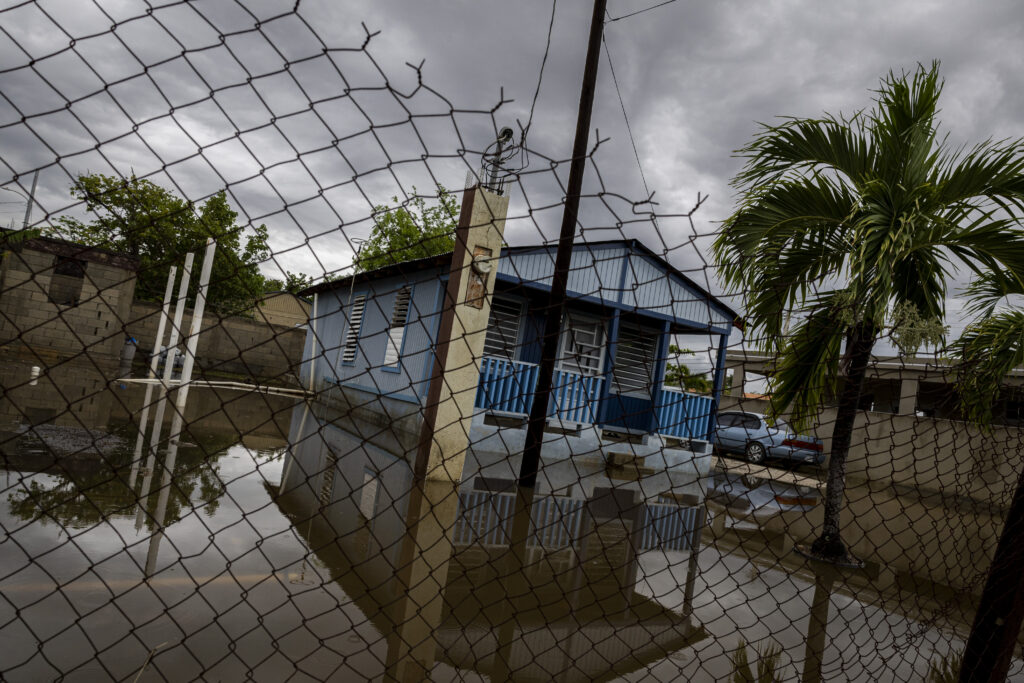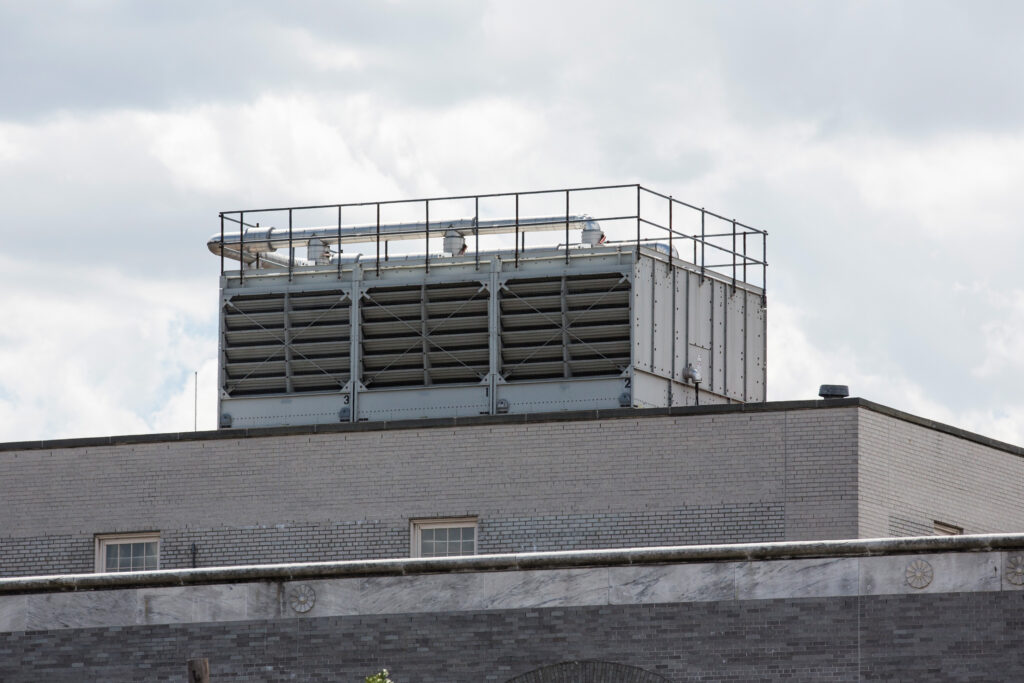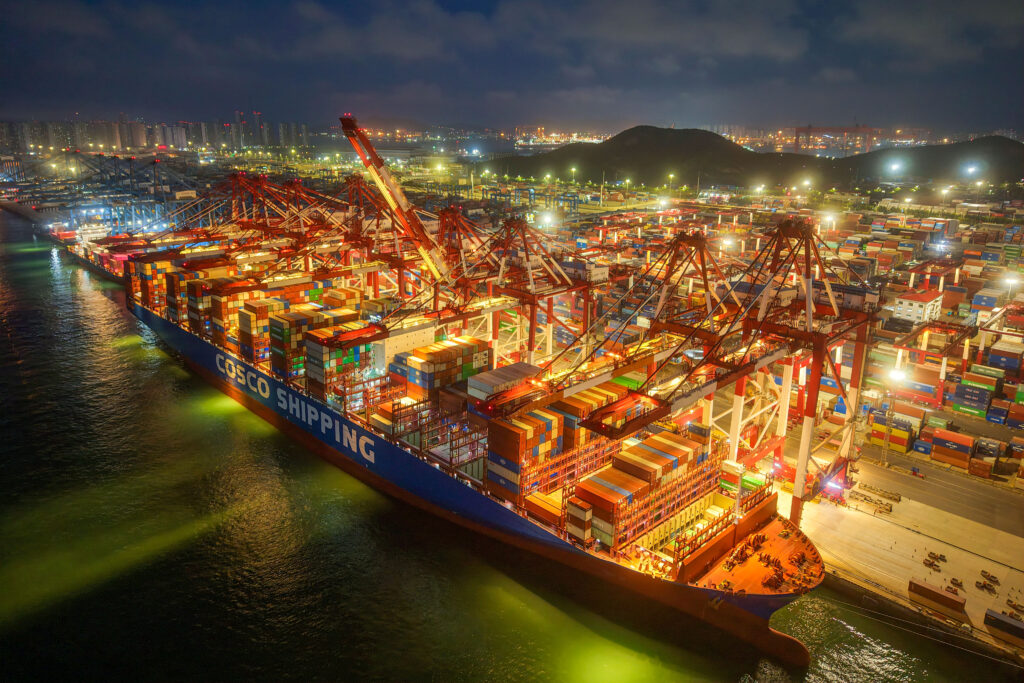L’ouragan Erin progresse dans les Caraïbes, menace la côte est américaine
Le puissant ouragan Erin continue lundi sa progression près des Bahamas, accompagné de rafales de vent puissantes et de pluies intenses, alors que la menace de vagues destructrices sur les côtes américaines grandit.Reclassé en catégorie 3 sur l’échelle de Saffir-Simpson qui en compte cinq, Erin évolue dans la région des Caraïbes avec des vents allant jusqu’à 205 km/h, selon le dernier bulletin du Centre américain des ouragans (NHC) à 23H00 (03H00 GMT).Erin est “inhabituellement gros”, soufflant des rafales de la puissance d’un ouragan jusqu’à près de 130 kilomètres au-delà de son oeil, et de l’ordre d’une tempête tropicale jusqu’à 370 kilomètres, d’après le NHC.De fortes averses localisées liées à son passage étaient attendues lundi dans le sud-est des Bahamas, l’archipel des Îles Turques-et-Caïques ainsi qu’en Haïti et en République dominicaine, avec un risque d’inondations.Après avoir frôlé les Bahamas, il doit opérer mardi un virage vers le nord pour ensuite passer entre la côte est des Etats-Unis et les Bermudes en milieu de semaine.Bien qu’il ne soit pas prévu qu’il touche terre, les services météorologiques ont exhorté lundi après-midi la population américaine à ne pas prendre à la légère cet ouragan.”Beaucoup d’entre vous pensent peut-être que la trajectoire d’Erin au large n’aura que peu ou pas d’impact au cours des prochains jours sur la côte est des États-Unis. Rien ne pourrait être plus faux”, a ainsi alerté Jamie Rhome, directeur adjoint du NHC, dans une vidéo diffusée sur les réseaux sociaux.Des courants dangereux ainsi que des vagues puissantes allant jusqu’à 6 mètres de hauteur sont en effet attendus, faisant courir le risque d’inondations côtières, notamment sur un chapelet d’îles bordant la Caroline du Nord. En prévision, certaines zones ont été soumises à des ordres d’évacuation.- Intensification rapide -L’ouragan Erin s’était rapproché au cours du week-end du nord des Petites Antilles et de Porto Rico, provoquant des dégâts matériels. Dans ce territoire américain dévasté en 2017 par l’ouragan Maria, des maisons et routes ont été submergées par les eaux.Les vents puissants ont également couché des arbres sur la chaussée, et 150.000 ménages avaient été privés de courant dimanche. D’autres coupures sont survenues lundi, a indiqué la compagnie d’électricité locale Luma, tout en assurant que le service avait été rétabli pour plus de 90% de ses clients.Premier ouragan de la saison en Atlantique Nord, Erin s’est très rapidement renforcé, atteignant en un peu plus de 24 heures le niveau maximal d’intensité.Soit l’une des intensifications les plus fortes et les plus rapides “jamais enregistrées”, a souligné Daniel Gilford, climatologue à Climate Central.D’après les analyses réalisées par cette organisation, Erin a traversé dans l’océan Atlantique des eaux exceptionnellement chaudes ce qui a permis une telle montée en puissance. “Nous savons que les ouragans agissent comme des moteurs thermiques qui absorbent l’énergie de la surface de l’océan et la convertissent en vents”, a rappelé M. Gilford.En réchauffant les mers, le changement climatique rend plus probable l’intensification rapide de telles tempêtes et augmente le risque de phénomènes plus puissants, selon les scientifiques.Malgré des débuts calmes, la saison des ouragans, qui s’étire de début juin à fin novembre, devrait cette année être plus intense que la normale, selon les prévisions des autorités météorologiques américaines.En 2024, la région avait été marquée par plusieurs tempêtes meurtrières, parmi lesquelles l’ouragan Hélène qui a fait plus de 200 morts dans le sud-est des Etats-Unis.
